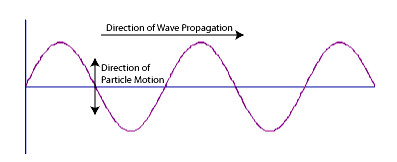The perfection of tuning, considered as an art, can be carried forward indefinitely…
tuning is my specialty, and it is very likely that I might have done better than many others, yet I felt that I ought to still further improve in the knowledge of the same and in the skill of applying it.
Nikola Tesla was applying principles of resonance, vibration, harmonics and tuning in his experiments to tap into the natural electricity of the earth, which he called the ‘aether’ or the ‘wheelwork of nature’. He believed it formed the underlying structure of the universe, flowing through the spaces between the stars and within the tiny particles that make up matter.
Resonance is found everywhere in the natural world as the principle that produces light and sound. Light is produced by resonance on an atomic scale, such as electrons in atoms. The sounds we hear are the result of setting resonant vibrations in motion. This is how the human vocal chords and acoustic instruments create sound. Resonance can occur in any vibrating system, including electrical circuits, the sound boxes of musical instruments, and within the human body. At resonance, energy flows from one kind of element to the other, and vice versa. Alternating current electricity is the combination of resonance with the flow of electrons in wires at 50, or 60 cycles per second.
The Renaissance astronomer Galileo Galilei explored principles of resonance with his study of pendulums and musical strings.

The Helmholtz resonator is made up of an enclosed volume of air connected to the outside air by means of an aperture. It is the simplest kind of resonant system used in musical instruments. The principle of acoustic resonators forms the basis of musical instrument design, in which the body of an instrument amplifies sound by producing natural resonance, or ‘standing waves’.
Tuning was originally an expression of the harmony of the universe. In musical terms, it means adjusting a pitch to be in tune, or in ‘harmony’. In mechanical and electronic terms, it means to adjust at a particular frequency with respect to resonance or to adjust to waves at a particular frequency (radio or television receivers), or for precise functioning.
A tuning fork is an acoustic resonator in the form of a fork with a handle and two prongs, or tines. It resonates at a constant frequency based on the length of the tines, and produces a pure tone.
listen:
G = 384 hz
Tuning Fork and Helmholtz Resonator
This is a demonstration of the transfer of sound energy from a tuning fork to a Helmholtz resonator, based on principles of resonance. (from the Smithsonian National Museum of American History, Washington, DC USA)
Acoustics is the science of sound. Sound is produced by a series of rapid vibrations.
Vibration Everything in the universe has vibration. It is the back and forth motion of an object, which creates waves.
Frequency, or pitch is determined by the number of vibration cycles per second.
Harmonics When a vibrating object, such as a string is set in motion it vibrates both as a whole with a frequency known as a ‘fundamental’, and also in parts. A string, for example, vibrates in its own length, but also in halves, thirds, fourths, fifths, etc. If the smaller lengths are integer fractions (1/2, 1/3, 1/4…) of the length of the string, their frequencies are called harmonics. Harmonics are also standing waves.

Harmonics of an open, vibrating string
Standing Waves are a wave phenomenon resulting from the interference of waves of the same frequency and kind traveling in opposite directions. They are described by the absence of propagation and the presence of nodes or partial nodes and antinodes, or loops, which have a fixed distribution in space.

Standing Wave on an open string
Beat Frequencies If two notes are about 15 hz. or less apart, interference will result from the closeness of the frequencies. They will slowly move in and out of phase. It is a form of amplitude modulation.
Transverse Waves oscillate in a direction that is perpendicular to the direction of displacement of the transmitting field or medium. Light waves and ocean waves are transverse.

Transverse Waves
Longitudinal Waves oscillate back and forth on the same axis as the one along which the wave propagates. Sound waves traveling through the air are longitudinal, and waves traveling through a fluid or gas are always longitudinal.
Longitudinal Waves

